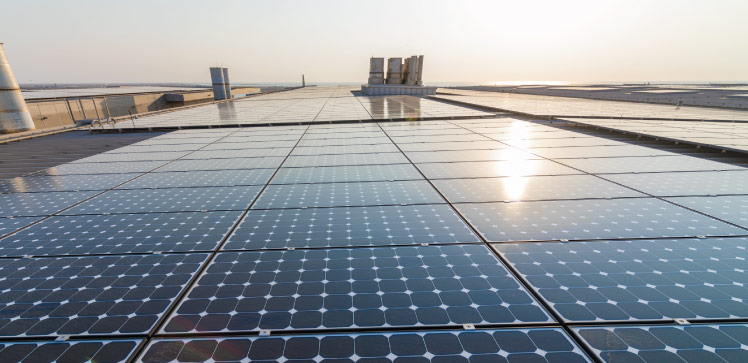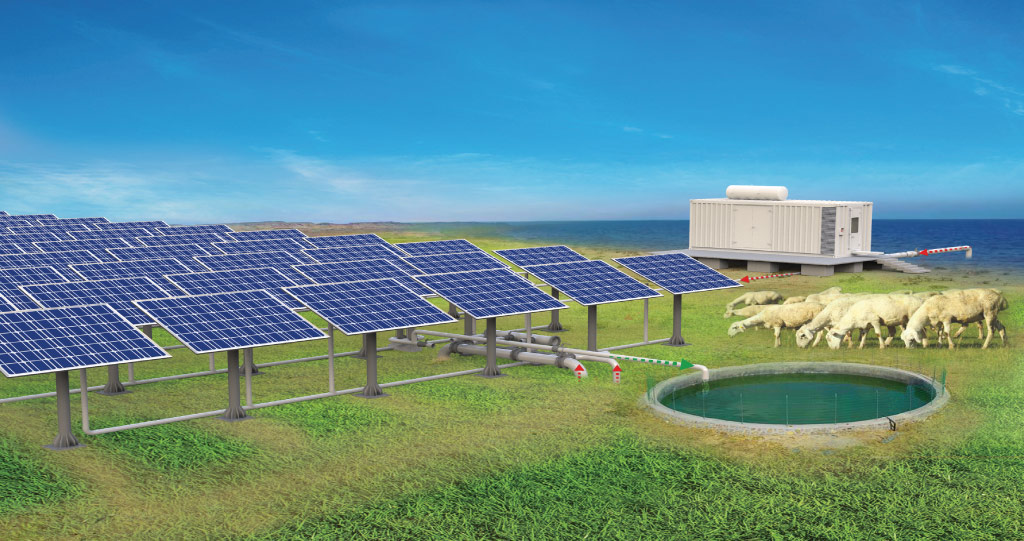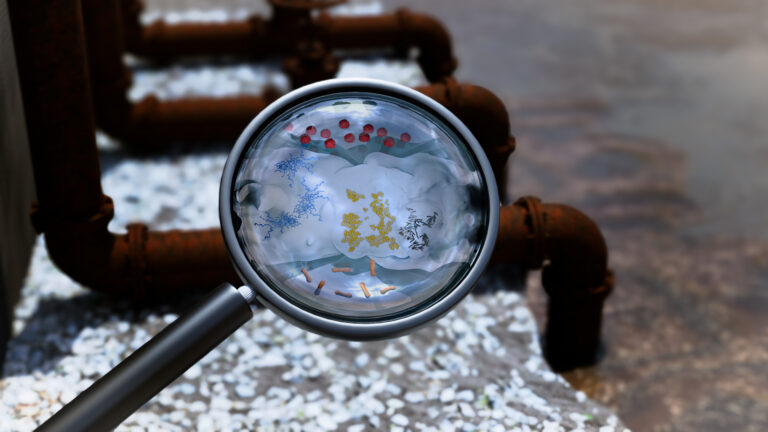Environmental Science and Engineering
Getting smart about off-grid desalination
Theoretical modeling helps boost the efficiency of a device that generates both clean drinking water and electricity.

Small changes in membrane design can have a large impact on the performance of a new technology developed at KAUST that uses waste heat from solar cells for seawater desalination.
Solar panels can become incredibly hot — more than 40 degrees Celsius warmer than the surrounding air temperature in arid regions. These conditions arise because silicon photovoltaic cells typically convert only one-quarter of absorbed solar energy into electricity while the remainder heats up the cell. Extreme operating temperatures reduce the cell’s efficiency and lifespan even further.
In 2019, Peng Wang and his team realized that waste solar-cell heat could be used for water purification. They developed a device that attaches under a photovoltaic panel and draws seawater into a series of layered channels. Water vaporized in the uppermost channel by solar-cell heat passes through a porous membrane to a lower layer, where it is redistilled. After three layers of purification, freshwater is produced at rates close to 1.6 liters per hour.

KAUST researchers developed a method to use waste heat generated by solar cells to desalinate seawater and produce drinkable fresh water.
First published in Wang et al. (2020).
Even with water cooling, however, the team found that the operating temperature of their photovoltaic panel remained stubbornly high. To remedy this, researchers Wenbin Wang and Sara Aleid helped develop a theoretical model to explore the relationship between certain membrane parameters, such as thickness and porosity, to the solar cell hotness.
“Realizing a lower solar-cell temperature relies on regulating heat transfer through the hydrophobic membrane in the multistage device,” explains Wang. “Simply by modulating the membrane parameters, we found that utilizing a thinner hydrophobic membrane with higher porosity enables higher desalination performance and lower solar-cell temperature to be achieved simultaneously.”
Taking these results from the laboratory to real-world environments required the team to minimize the energy needs and waste by-products associated with desalination. Taking inspiration from infusion technology used in intravenous lines, the researchers developed a gravity-driven system that feeds seawater into the solar-cell device without external pumps. In addition, a special fabric wicks away solid salts and minerals, avoiding the release of toxic liquid brine.
“Because our device aims to desalinate seawater and provide electricity for off-grid communities, relying on a mechanical pump to control the flow rate of source water is not a good choice,” explains Wang.
Experiments, including outdoor tests on the sunny KAUST campus, revealed that the new membrane design boosted electricity generation by 8 percent while also doubling previous rates of freshwater generation.
References
- Wang, W., Aleid, S., Shi, Y., Zhang, C., Li, R., Wu, M., Zhuo, S. & Wang, P. Integrated solar-driven PV cooling and seawater desalination with zero liquid discharge. Joule 5, 1873-1887 (2021).| article
You might also like

Environmental Science and Engineering
Bacteria reveal hidden powers of electricity transfer

Environmental Science and Engineering
Wastewater surveillance tracks spread of antibiotic resistance

Bioscience
Super fungi survive extreme Mars-like environments

Environmental Science and Engineering
Rethinking food systems to restore degraded lands

Environmental Science and Engineering
Combat climate change by eliminating easy targets

Environmental Science and Engineering
Wastewater treatment to fight the spread of antibiotic resistance

Bioscience
Digging into the world of plant-growth-promoting microbes

Bioscience




